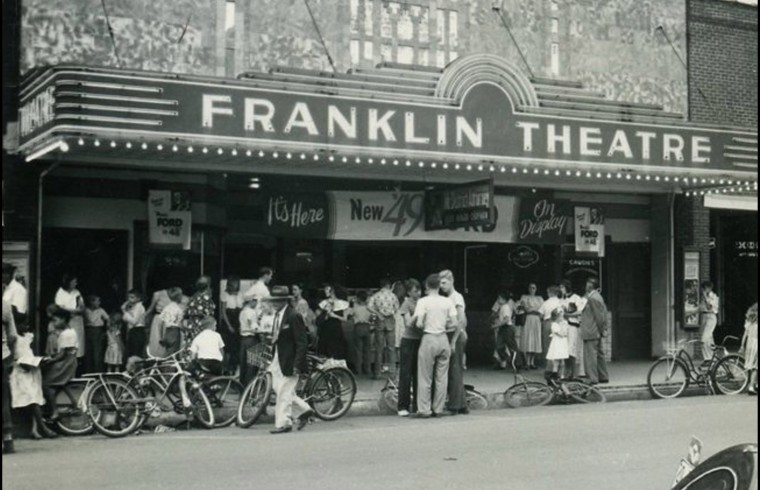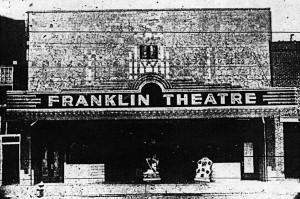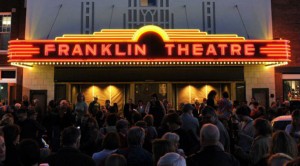| 1 | 2 | 3 | 4 | > Next |
The Franklin Theatre took about $26,000 to open in 1937. $14,000 for the building and $12,000 for equipment, machinery, draperies, carpet, seats, lights, and the newest type of screen. To save it from being permanently shut down, it took $8.6 million and the help of an entire community.
Williamson County has changed- and is changing- so much. Many of us love the place we live but, because we did not grow up here or just don’t remember, do not really know its story all that well.
To add color and life to our collective knowledge of the past of the place we all call home, we thought we would start a series that tells the story of how the place we choose to live became what it is today.
The Franklin Theatre on Main Street in downtown Franklin seems like a perfect place to start. It is iconic and nostalgic. And it is an engine for culture and business in downtown Franklin. Without that marquee on Main Street, downtown would just not be the same. It adds culture and identity and nightlife to Franklin.
The Golden Years
As long as there were movies, there was a theatre downtown. The first incarnation of what could be called the Franklin Theatre was on the second floor of what is now First Tennessee Bank on the square in downtown. In 1937, it moved to more or less its present location.
According to the Heritage Foundation of Franklin historian Rick Warwick, the theatre as we know it opened its doors on July 15, 1937 in what had been a car dealership- the old Hunter Motor Company building.
The first feature ever there was Night Must Fall, starring Robert Montgomery and Rosaline Russell. Admission was 10 cents for children and a quarter for adults.
.
These were the golden years- of film and small independent theaters. The venue thrived especially from the ’30s through the ’60s.
By the year 2000, the economic model for small local theaters- historic theaters- basically was broken. And the theatre itself was outdated and falling into disrepair. By 2007, not creating enough revenue to keep up with increasing rent in hot downtown real estate, the theatre shut down and the building was bought by the Corner Partnership and Mark Bloom, who planned to resell the space.
On the verge of fading to black, the community stepped in to save and restore the Main Street icon.
The Show Must, But Almost Didn’t, Go On
“The theatre was such a beloved place and even if I hadn’t thought it was important, I was getting 20 calls a day saying we have got to do something to save the theatre,” said Mary Pearce, Executive Director of the Heritage Foundation of Franklin and Williamson County.
But saving the theatre meant coming up with not just the money to buy the building but also restore it. And once all that was done, it would still leave a theatre operating on a business model that could only stay solvent as a non-profit that would need continued support from the community to cover costs.
Bloom gave the Heritage Foundation a month to come up with a way to buy or lease the building before he sold it.
Enter Emily Magid.
Magid is a pleasant woman with sharp green eyes and dyed purple hair. She is a board member for Heritage Foundation, the Franklin Theatre, and Vice President of Williamson Animal Services, Inc. She grew up in Nashville in the ’60s and loved coming to the Franklin Theatre.
“As a kid it was fabulous, you could put your feet up on anything you could get pizza, a hot dog, there were two theaters . . . not until you got older did you realize that the seats were sagging and it was really a rundown place,” she said.
The deadline was looming with no solution in sight.
“We were racking our brains trying to figure out what we could do with it . . . and the night before the deadline after we had a meeting I went home and was trying to think of something and it was like four in the morning and I thought, well, can I buy it? So I called my accountant and my stockbroker at four in the morning and asked them if I could do it and they said yes.”
At the last minute, Magid donated $2 million, and the Theatre was saved.
Now, the Heritage Foundation had the even more daunting task of revitalizing and renovating what had turned into an old rundown venue.
Tomorrow, we bring you Part 2 of “Franklin From Yesterday: Saving the Theatre.” You’ll learn what it took to bring the Theatre back and how you can support the Theatre.





















